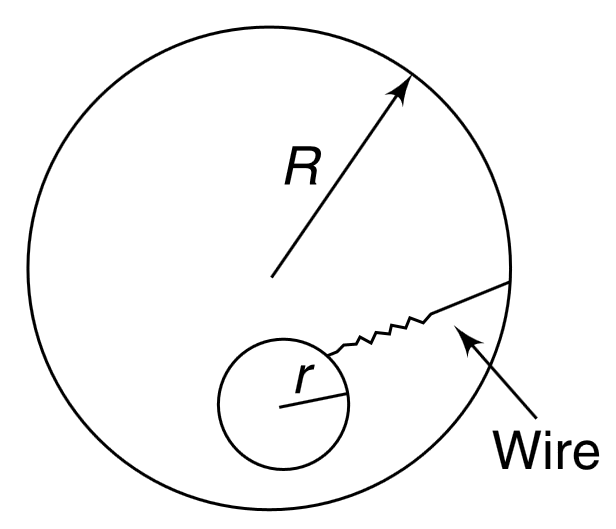
A conducting ball of radius r is charged to a potential V0. It is enveloped by a thin walled conducting sphere of radius R (gt r) and the two spheres are connected by a conducting wire. Find the potential of the outer sphere.
The correct Answer is:VrR
Step by step video, text & image solution for A conducting ball of radius r is charged to a potential V_0. It is enveloped by a thin walled conducting sphere of radius R (gt r) and the two spheres are connected by a conducting wire. Find the potential of the outer sphere. by Physics experts to help you in doubts & scoring excellent marks in Class 12 exams.
Updated on:21/07/2023Topper's Solved these Questions
- ELECTROSTATICSBOOK - ARIHANTCHAPTER - ELECTROSTATICSEXERCISE - Level 3
59 Videos
- ELECTROSTATICSBOOK - ARIHANTCHAPTER - ELECTROSTATICSEXERCISE - Level 3
59 Videos
- ELECTROMAGNETIC INDUCTIONBOOK - ARIHANTCHAPTER - ELECTROMAGNETIC INDUCTIONEXERCISE - Level 3
12 Videos
- GEOMETRICAL OPTICSBOOK - ARIHANTCHAPTER - GEOMETRICAL OPTICSEXERCISE - Level 3
9 Videos
Similar Questions
A metal sphere A of radius a is charged to potential V. What will be its potential if it is enclosed ny a spherical conducting shell B of radius b and the two are connected by a wire ?
View SolutionA metal sphere A of radius 1m is charged to a potential of 20V .What will be its potential (in volt) when it is enclosed by a spherical conducting shell B of radius 2m and two are connected by a wire?
View Solution
Knowledge Check
A conducting sphere of radius r has a charge . Then .
Athe charge is uniformly distributed over its surface if there is an external electric field .BDistribution of charge over its surface will be non uniform if no external electric field exist in space,CElectric field strength inside the sphere will be equal to zero only when no external electric field existsDPotential at every point of the sphere must be sameThe capacitance of an isolated conducting sphere of radius R is proportional to
A4πε0rB2πε0rCπε0rD8πε0rA solid conducting sphere of radius r is given some charge. Then :
AThe charge is uniformly distributed over its surface, if there is an external electric field.BDistribution of charge over its surface will be non uniform if no external electric field exist in spaceCElectric field strength inside the sphere will be equal to zero only when no external electric field existsDPotential at every point of the sphere must be same in all cases
A metal sphere A of radius 1m is charged to a potential of 20V .What will be its potential (in volt) when it is enclosed by a spherical conducting shell B of radius 2m and two are connected by a wire?
View SolutionA conducting sphere of radius R is charged to a potential of V volts. Then the electric field at a distance r(>R) from the centre of the sphere would be
View SolutionA conducting sphere of radius R is charged to a potential of V volts. Then the electric field at a distance r(>R) from the centre of the sphere would be
View SolutionThe potential at a distance R/2 from the centre of a conducting sphere of radius R will be
View SolutionMetallic sphere of radius R is charged to potential V. Then charge q is proportional to
View Solution
